FEATURED
2021.5.10 MON
Exhibition
Manga meets CHANEL
Interview of Kaiu Shirai & Posuka Demizu
“Miroirs-Manga meets CHANEL” exhibition is being held by 6th June. We interviewed Kaiu Shirai and Posuka Demizu about the process of creating the project for more than two years.
Posuka Demizu: We couldn’t visit France like we had planned because of COVID-19, but we investigated the best we could in Japan with cooperation from Chanel. For example, we went to stores in Japan and received detailed lectures on Chanel’s products, brand, and history, as well as various episodes about Gabrielle’s actual life. We also had video sessions with some CHANEL people in France to learn more about the brand.
Kaiu Shirai: Other than that, we powered through the many books that were recommended to us, watched a movie about Chanel (Coco avant Chanel), and got a special chance to virtually explore Gabrielle’s apartment. Shueisha’s fashion magazine department also cooperated with our investigation. Another thing we did was buy all the types of No5 and try them out to see how each was different.
Kaiu Shirai: First of all, the concept I decided on was to develop the storyboard as “a collection of Demizu-sensei’s illustrations in manga format.”
In terms of story, I attempted to render what inspired me about Gabrielle Chanel into a character for each chapter. Partly because we did not get to visit France, I set the stories in Japan to show how Chanel’s spirit and products are thriving in modern day Japan.
Kaiu Shirai: “Miroirs,” is the plural form of “mirror” in French. There is a supposed quote from Gabrielle Chanel about mirrors that talks about how mirrors are an honest reflection of the self and remind us who we really are. So I already had that keyword on my mind when I got the chance to see Gabrielle’s apartment through photos and a virtual tour, and discovered the multitude of beautiful mirrors that adorned her rooms, such as along the spiral staircase and in the living room. I decided to scatter aspects of what I saw in Gabrielle as character motifs throughout the chapters. I thought that would make the format seem as if numerous mirrors were presenting the multifaceted aspects of Gabrielle Chanel. That’s why I chose the title “MIROIRS” to mean “many mirrors.”
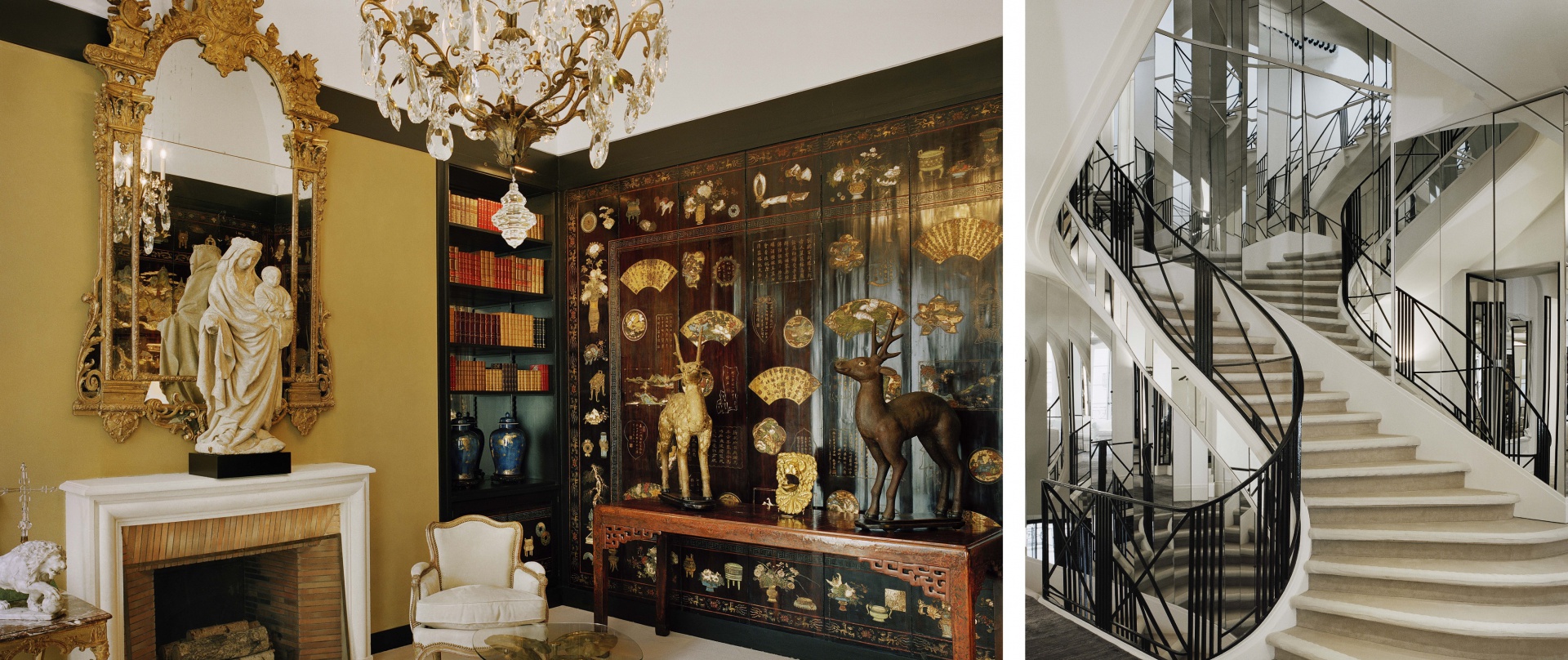
Posuka Demizu: The illustration was inspired by the idea of Chanel reimagining or “repainting” the world, which was something I saw as I learned more about Chanel. In addition, because the bottle design of Nº5 is fairly simple and standard, I mentally made a link to the simple bottle designs for turpentine, a medium used in oil painting. This led to the idea of paint. I think being able to include the Tokyo cityscape in the art is a meaningful product of this collaboration being done in Japan.
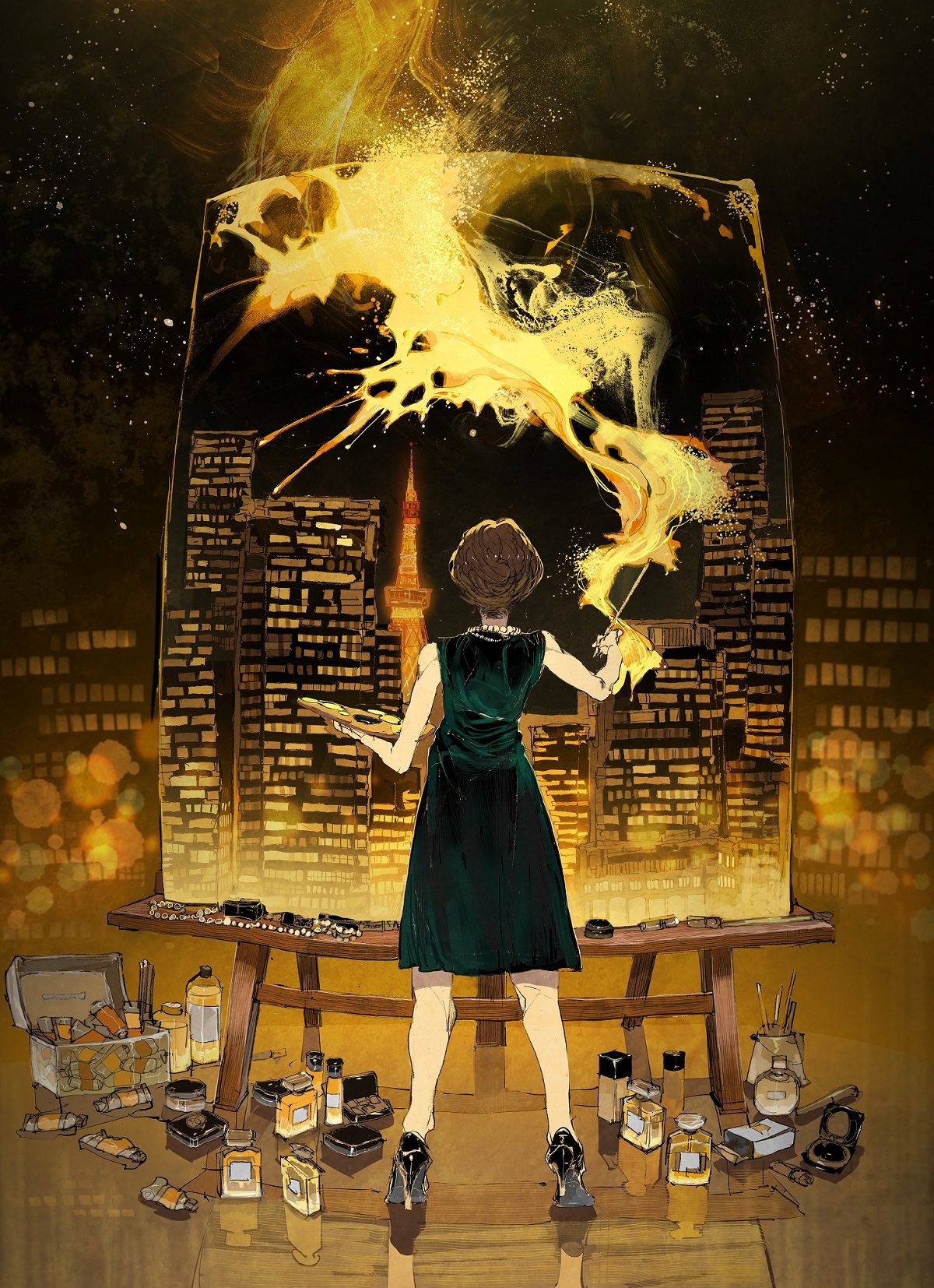
Posuka Demizu: Showing the character from behind makes it an unusual choice for the cover of a manga volume, but the concept for this project was to express “possessing the spirit of Gabrielle Chanel.” Choosing not to show the woman’s face gives room for many possibilities. She might be Gabrielle Chanel herself, she might not be, or she could be a reflection of all of us who admire Gabrielle. I got to do something very different from what I usually do with this project, so it was a new challenge for me.
Kaiu Shirai: I am very drawn to the idea and functionality of perfume being an “invisible” accessory. Just like applying lipstick or putting on a necklace or earrings…a tie or a watch, you adorn yourself with a parfum that makes you shine. It also provides a reminder of a person without the advantage of sight. Even if that person is not in front of you…even if they’re gone, something exists that reminds you of that person.
Perfume is very alluring, giving the fantastical impression that it is a kind of magic that people cast on themselves, but might put you under its spell, too, before you even realize it.
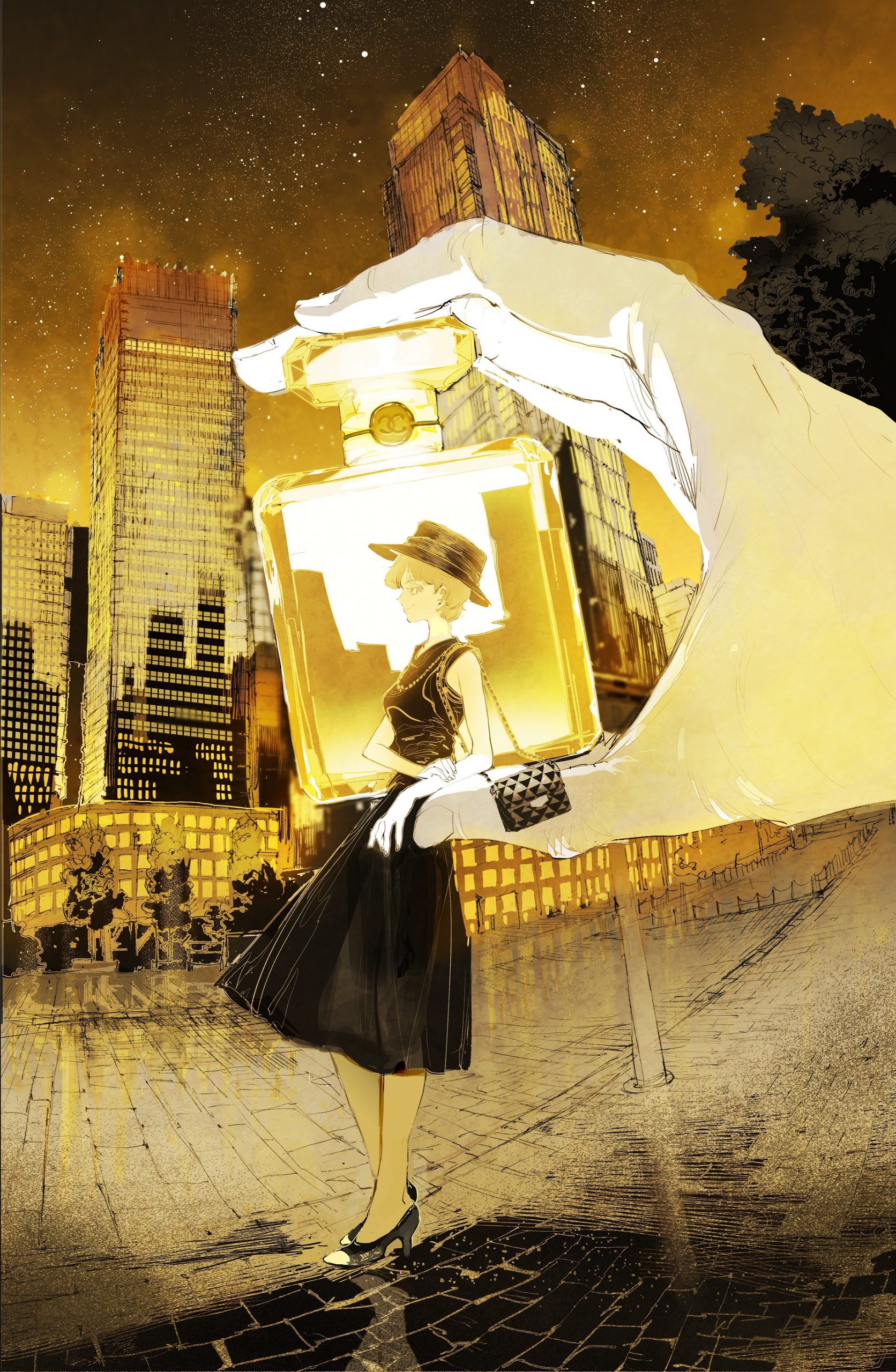
Posuka Demizu: I really like how it looks when looking at the stopper from straight above!
I used that element in several places, such as in the speech bubbles.
As I worked, I realized that the shape of the bottle went through significant changes through the ages. In particular, the shape of the stopper varies quite a bit.
The nozzle that can be seen through the crystal-shaped stopper is different depending on whether the perfume is supposed to used directly or as a mist, but when you remove the nozzle for misting, it reveals beautifully curved refracting light from the glass that makes it look like there are bubbles inside, which I love (particularly when viewed from the side). I just wish I could depict what that light looks like!
Kaiu Shirai: The main character of the first chapter is a girl who loves reading and using her imagination.
She lives together with her mother, but she does not get to spend as much time with her beloved mother as she likes. The girl also believes that she was somehow born without wings (In this case “wings” represent something to be proud of, such as a talent, physical attractiveness, honor, or some other strong suit.)
I heard that Gabrielle Chanel also liked reading and read many books throughout her life. I understand that she also had an active imagination. Gabrielle was apparently born to a underprivileged family, and after her mother passed away of illness when she was twelve, their father left her and her sisters in a convent and disappeared. The character in the first chapter is inspired by Gabrielle back before she truly became someone, when she looked upon her life in the convent with a determined glare and read books to expand her world.
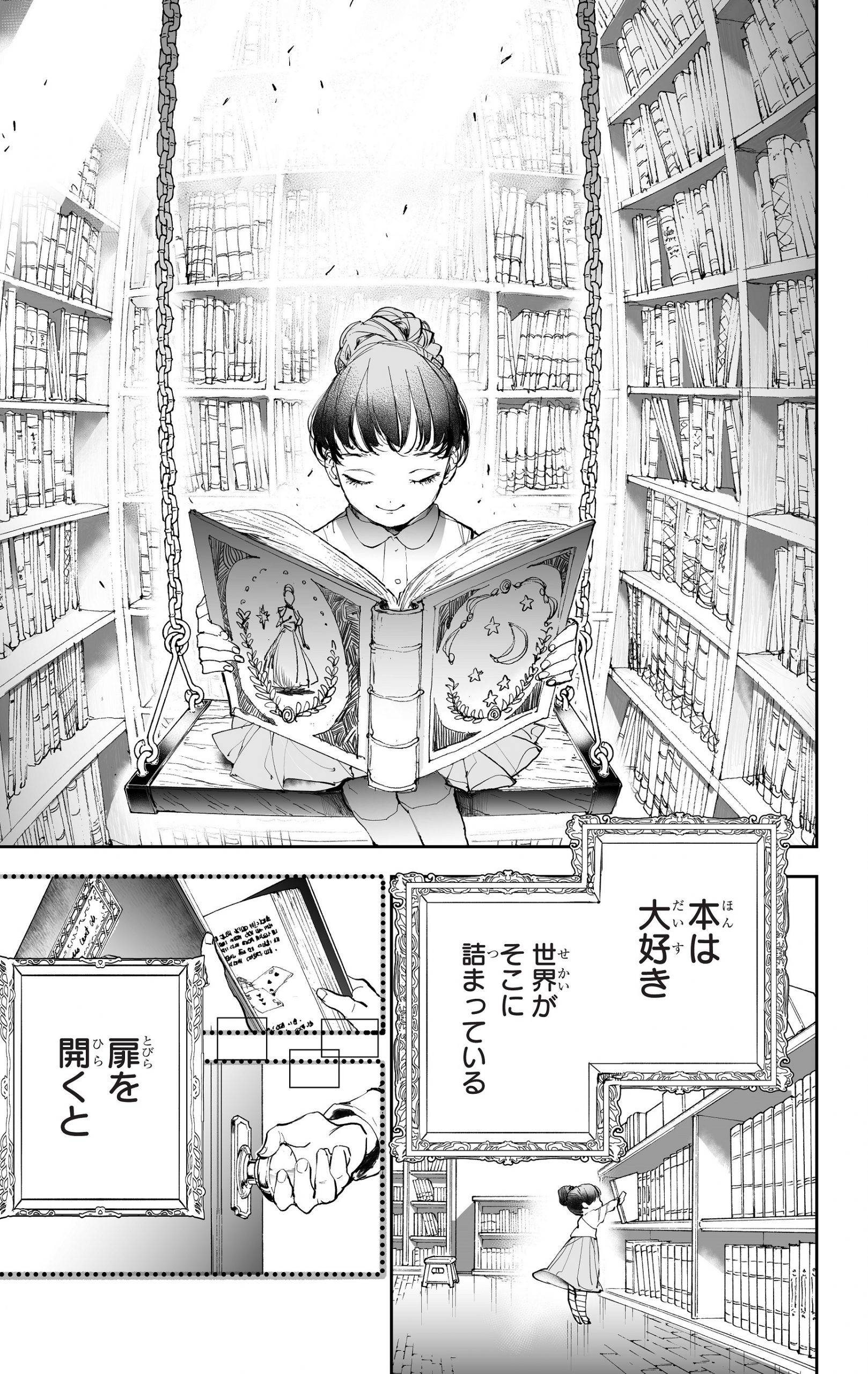
The main character of the second chapter is a woman who loves and enjoys freedom and fashion. She excels at makeup and routinely changes her face and attire depending on her daily changes in mood. I understand that Gabrielle herself enjoyed dressing in different styles.
I drew inspiration from the way Gabrielle also enjoyed fashion, as well as her unconventional nature, the way her true self could not be taken at face value because she didn’t readily disclose everything, and how mysterious she was, much like the No5. This character relishes all of the freedoms that Gabrielle bestowed upon the women of today.
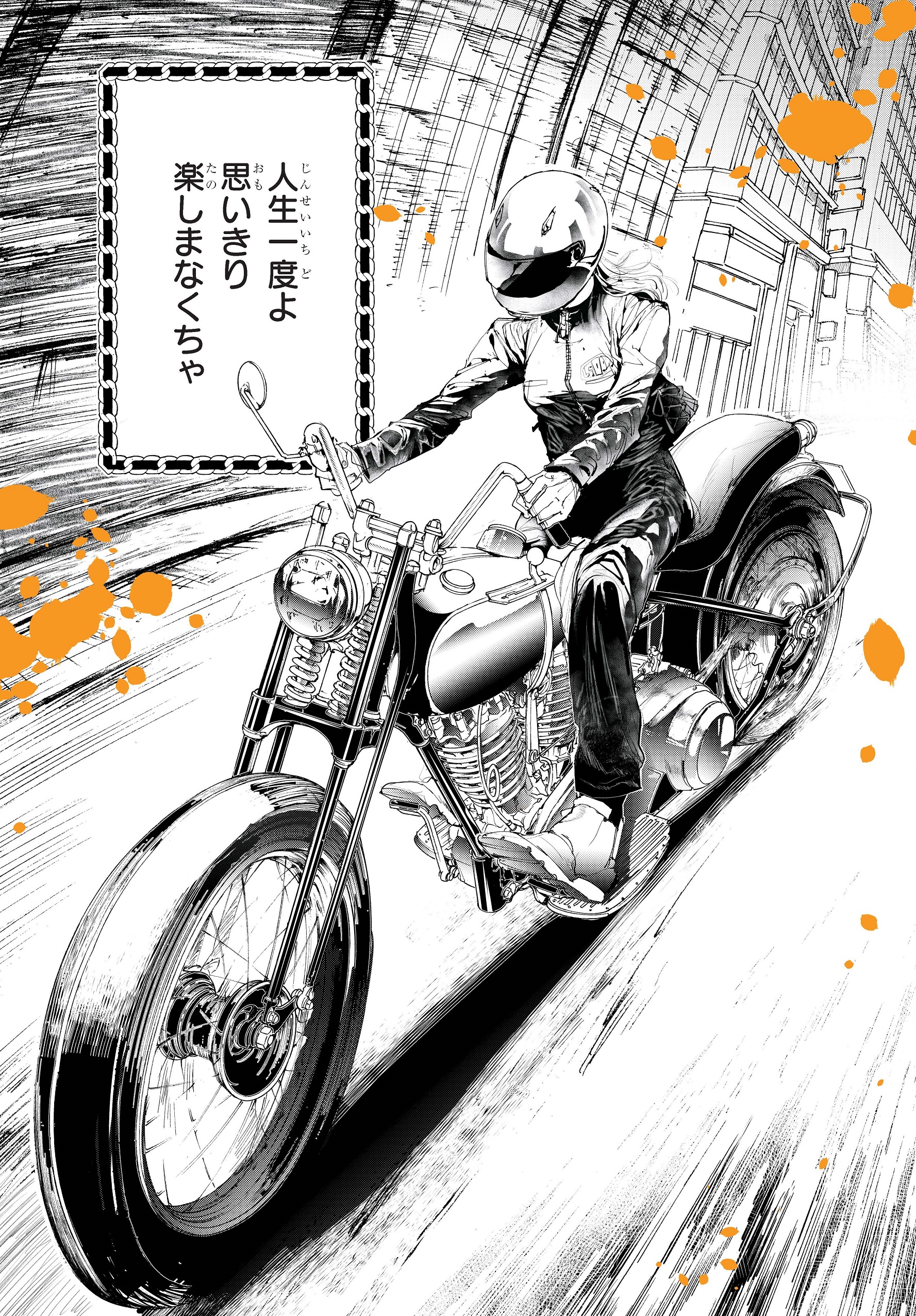
In the third chapter, the main character is a boy who has a deep inferiority complex concerning his facial and bodily features. He feels suffocated living in the world. I think that Gabrielle grew up with a physique and aesthetic tastes that diverged from the values and trends of the average populace (in France) during her time. But the way Gabrielle stuck with what she wanted to wear, what she wanted to do, and how she wanted to be drew people in and overturned the world’s values. The third character draws inspiration from Gabrielle’s spirit of defiance, as well as how love and hate seem to intertwine within Gabrielle like two sides of the same coin.
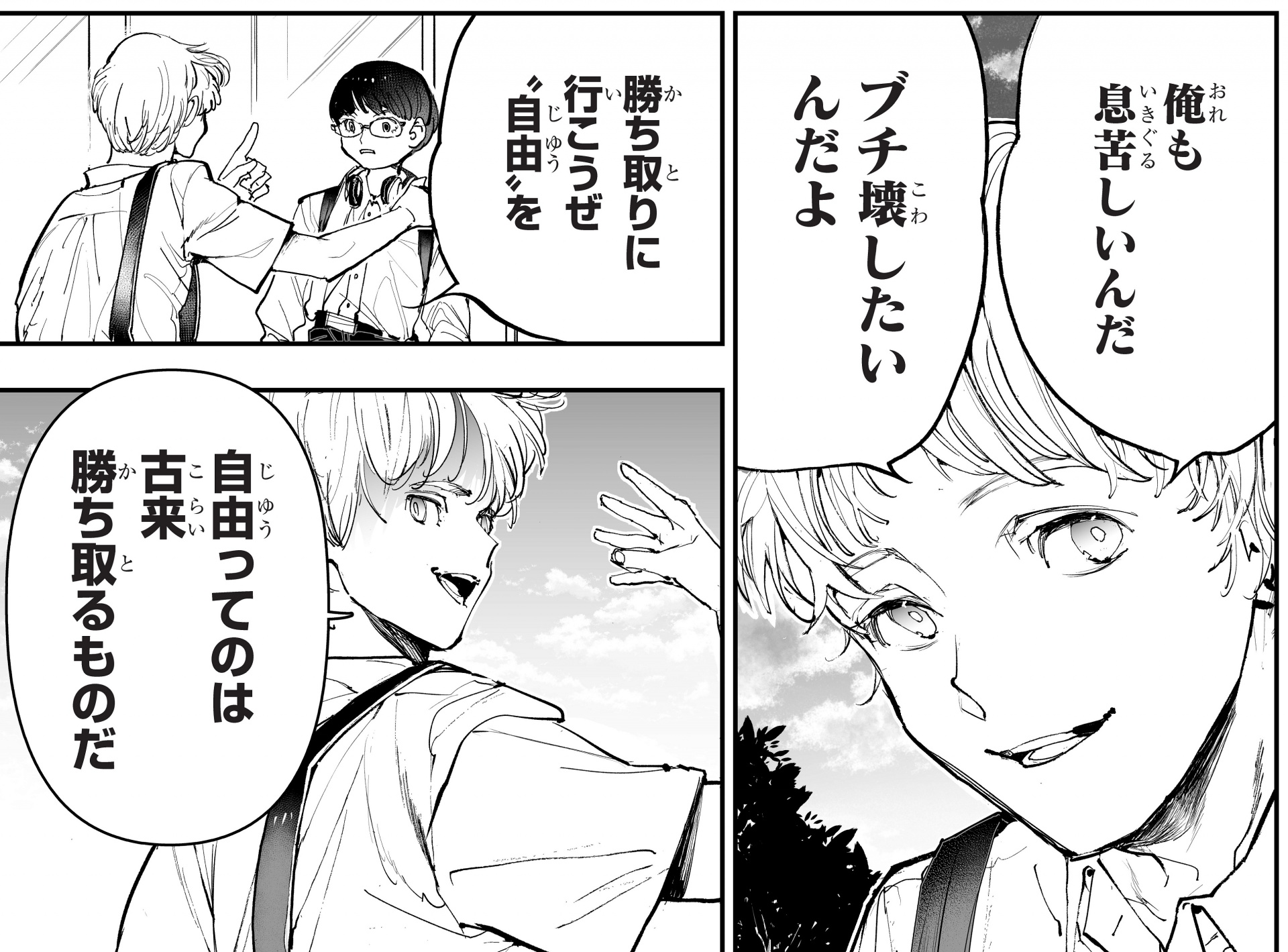
Kaiu Shirai: It’s amazing and extremely spectacular.
There are plenty of spectacular aspects, but the first thing that stands out is the display of mirrors that you see when you first enter the venue. Also, the frame-covered wall that serves as the entryway to the three chapters is incredibly cool. It’s very reminiscent of Gabrielle Chanel’s apartment, which we had the chance to see through photos and a virtual tour. The wall is covered in frames that fit with the feel of her apartment, and just looking at them is an enthralling experience. The frames feature a superb selection of quotes from Gabrielle, photos, and various other items. Each chapter is exhibited on large panels in stunning color, offering a look at a world that’s quite different from what you see in manga volume size. The exhibition space is also interspersed with material related to Gabrielle, much of which is quite rare and incredible. It’s an amazing exhibition whether you’re looking to dive deeper into the manga or whether you’re hoping to learn more about Chanel, and I was so excited to be there.
Posuka Demizu: I was so astonished. The first transition from the display of mirrors to the exhibition space feels cosmic, almost mystical. But what surprised me the most was how vibrant the colored part of the illustrations came out. I almost thought for a moment that they were digital displays. I suppose it has something to do with the printing method and the strength and angle of the venue’s lighting. I still don’t fully understand why the colors look so stunning, but I was struck by the contrast created between the panels and their surroundings, and how the printing makes the illustrations really pop. I was also blown away by the frames up in the entrance. That display is very dreamy—kind of what I hope the interior of the castle in the first chapter would feel like. I love how it makes you want to stay there forever.
Kaiu Shirai: I want people to see the whole thing—the first display of mirrors at the entrance, the wall of frames, and the rooms for each chapter. They created a truly magnificent exhibition. I’m happy of course if people get something out of just reading the manga, but the exhibition adds an extra layer of depth to the work. It does an amazing job of expressing my thoughts on Gabrielle and the Chanel brand, as well as where I drew my inspirations from. For example, you will find quotes from Gabrielle on display that match perfectly with the work. That’s the kind of detail I want people to see, as well as the many valuable items brought over from France, such as an old VOGUE magazine or lipstick from a past era. Also, there’s an illustration in the venue that Demizu-sensei drew directly on the vertical surface of the wall, in one shot. It wasn’t put up after being drawn elsewhere. It’s truly amazing, so I hope you will check it out.
Posuka Demizu: I hope you will take a look at the illustration I drew directly on the wall of the venue. I was very nervous drawing it since I had so many onlookers at the time. Also, rough sketches that correspond to the manga displays are incorporated on the walls. The sketches are presented in various ways, some in different colors, others flipped, and so on, and I hope you will enjoy seeing them together with the final manga manuscript.
Cooperation for interview:SHUEISHA Inc. Weekly Shonen Jump Editorial Department
